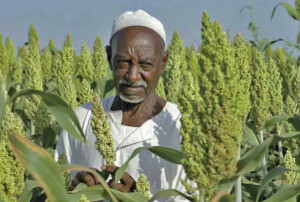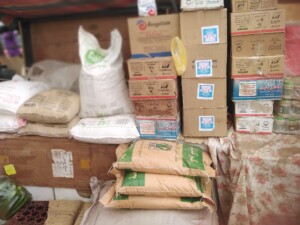Funded farming in eastern Sudan ‘decreased by half’ this year
The funding of agricultural projects in eastern Sudan’s El Gedaref has halved this year compared to 2021. The number of farmers who applied for and received loans this year decreased by 85 percent. Farmers are facing constraints in obtaining the necessary bank credit to start agricultural operations.
 Rapid seed drill (ics-agri.com)
Rapid seed drill (ics-agri.com)
The funding of agricultural projects in eastern Sudan’s El Gedaref has halved this year compared to 2021. The number of farmers who applied for and received loans this year decreased by 85 percent. Farmers are facing constraints in obtaining the necessary bank credit to start agricultural operations.
During the inauguration of funding for the current agricultural season in El Gedaref, Abdallah Takrouni, director of the El Gedaref branch of the Bank of Sudan, stated that “agricultural financing in all forms” reached SDG7,121 billion since the beginning of August, compared to SDG15 billion in the same period last year, meaning a decrease of 52 percent.
The Sudan News Agency reported on Monday that the total funding in the same period last year, for a total of 2,000 feddan, was 75 percent, while this year about 490,000 feddan were financed, which amount to 26 percent of the total funding.
The bank director stated that 3,936 farmers received funding during the rainy season of 2021, while the number of funded farmers this year reached 605 only, which means a decrease of 85 percent.
These data were submitted to the Central Bank “to achieve the desired goals”, Takrouni said. He urged the Sudan Agricultural Bank “to catch up on financing at its appointed time next year”.
He further praised the efforts made by the El Gedaref government and the Sudan Farmers Committee to provide finances to the farmers in El Gedaref, and called on the farmers “to repay their loans on time at the end of the agricultural season, in accordance with the regulations in place”.
Farmers in eastern Sudan said last month that they were thinking about establishing cooperative companies that will use collective economic and bargaining power to provide them with the necessary supplies, and market their produce by themselves.
This method removes farmers from the control of financiers and their control over the markets, an influential farmer reported from El Gedaref.
‘Insolvent’
In early June, at the beginning of the rain-fed agricultural season, farmers in El Gezira expressed serious concerns about their ability to start cultivating during the June-to-September main rainfall season this year.
The preparations for this year’s main agricultural season did not exceed three percent, Ahmed Babiker, Secretary-General of the El Gezira and El Managil Farmers Association, said, and pointed to the “catastrophe” of last year. because of the government’s lack of commitment to set indicative prices for the cultivation needs on time.
The farmers were forced to take loans from the Agricultural Bank to prepare for the winter season, as the bank’s financing of production inputs stopped five years ago, and they did not receive any other state support, Babiker. explained. He expressed his fear that “If the situation continues in this way, there will be no cultivation anymore in El Gezira.”
A farmer in neighbouring Sennar said that the main agricultural season last year not only suffered from a lack of rain, but also failed because of the delay in financing and the significant rise in fuel prices. “About 90 per cent of the farmers here are insolvent,” he said, and expected that he would not plant this season if diesel would not be available for a reasonable price and the Agricultural Bank would not have adjusted its debt payments schedule to the current situation.
Various constrains
The Famine Early Warning Systems Network (FEWS NET) said in its July report on Sudan that farmers in the semi-mechanised sectors are facing constraints in obtaining the necessary bank credit to start agricultural operations. High fuel prices and acute fuel shortages are reducing land preparation operations that usually begin in April.
In the irrigated schemes, a dam operating engineers and workers strike in early June delayed irrigation water supplies to the fields and an irrigated start to the agricultural season before the rains were fully established. The delays in planting, lower than typical planted acreage, and lower access to irrigation are likely to reduce the harvest, particularly for staple food crops, FEWS NET predicts.
The network further reported that sorghum and millet national average retail prices remained high in July. They are 182 and 613 percent higher than their respective prices last year.
Sudan continues to experience poor macroeconomic conditions due to persistent shortages of hard currency reserves, a poor SDG to USD exchange rate, and high inflation, the FEWS Net report reads. This has continued reducing the government and private sector’s ability to import essential food and non-food items, including improved seeds, fertilizers, herbicides, and pesticides for the recently started 2022/2023 agricultural season.
The UN Office for the Coordination of Humanitarian Affairs (OCHA) in Sudan reported last week that about a quarter of Sudan’s population (11.7 million people) is estimated to be facing acute food insecurity from June to September.











 and then
and then